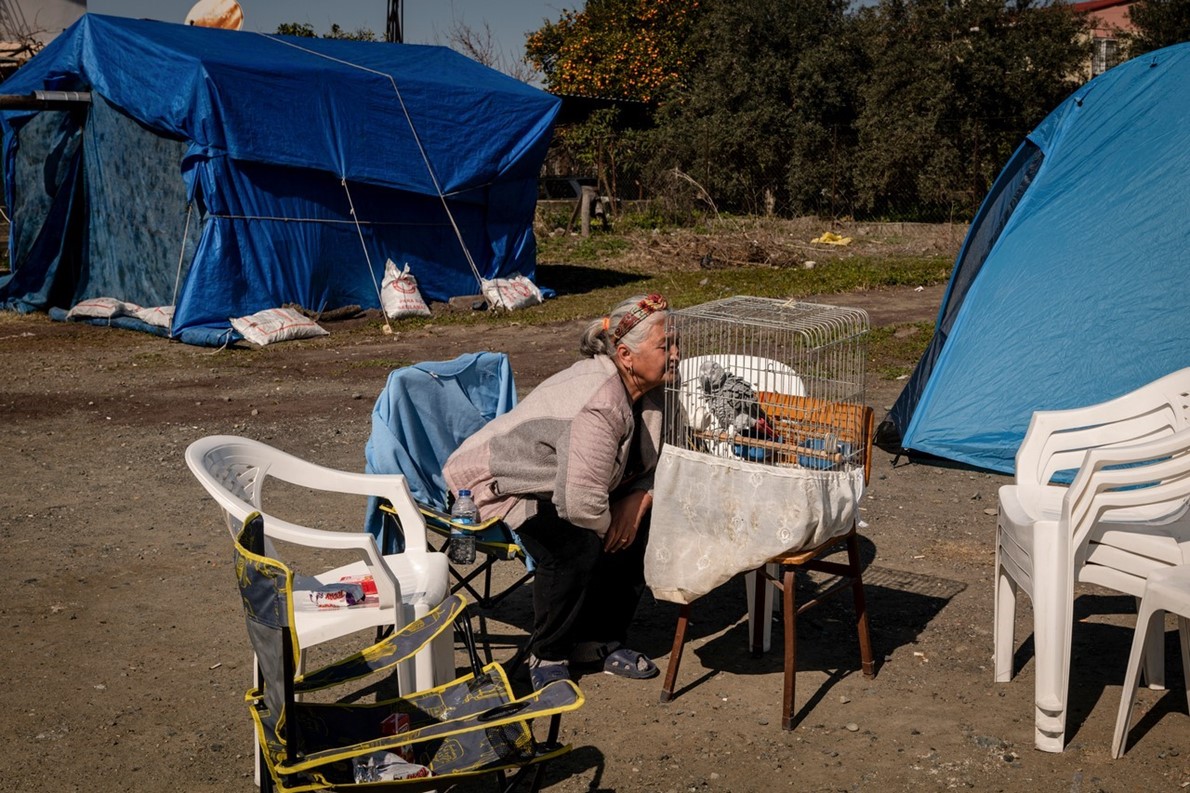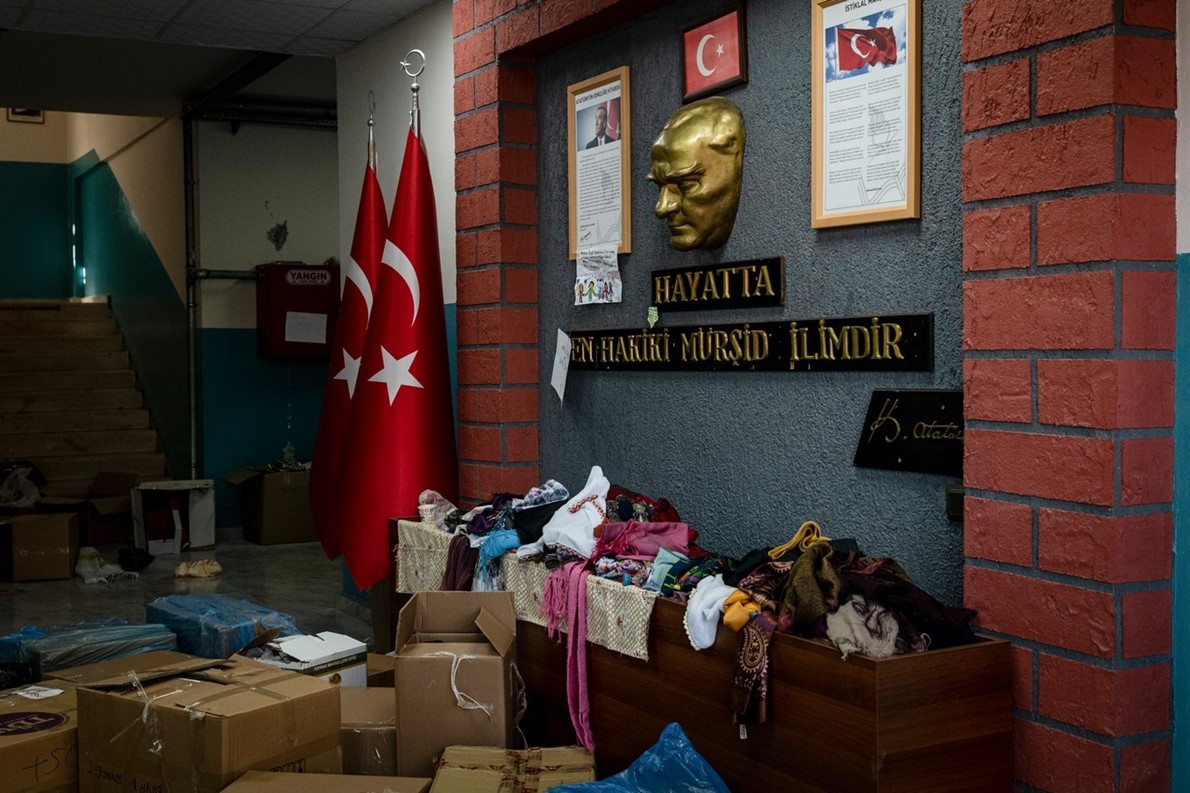For miles around the small Turkish
city of Erzin, the earth is shattered and buildings are razed, towns and cities
turned into tombs of concrete by last week’s 7.8 magnitude earthquake.
اضافة اعلان
But Erzin still stands, an oasis of
stability near the Mediterranean, where the question of why the city weathered
the quake and a powerful aftershock — and so many others did not, leaving more
than 40,000 dead in Turkey and Syria — is consuming the population. In Erzin,
the mayor said, no one died and not a single building fell.
The mayor almost immediately seized the
moment to boast that he had long prevented slipshod construction, now the focus
of authorities around Turkey. But engineers and scientists credited other
factors combining to save the city, like better construction that followed the
latest seismic codes, and Erzin’s lucky location on very solid ground.
 A
damaged mosque and minaret in Erzin, Turkey, on February 14, 2023. Erzin
survived last week's 7.8-magnitude quake with no casualties and little damage.
A
damaged mosque and minaret in Erzin, Turkey, on February 14, 2023. Erzin
survived last week's 7.8-magnitude quake with no casualties and little damage.
“Soil condition is the main reason why we
don’t have heavy damage,” said Omer Emre, a geomorphologist who has spent 40
years studying the region’s fault lines and now works with a private research
group, Fugro.
When soil absorbs shockErzin lies less than 80km from the
earthquake’s epicenter, closer than cities to the south like Iskenderun and
Antakya. But Antakya was devastated, much of it reduced to rubble, and Iskenderun
was badly hit, with a major fire at the port, seawater flooding the streets,
and apartments and shops destroyed.
Many cities and villages of the region were
built atop the layers of sand, silt, and clay of an ancient riverbed. That
soil, like the soft coastal ground beneath Iskenderun, was more susceptible to
shaking, Emre said.
“These soft, water-laden sediments make
cities and villages uniquely vulnerable to earthquakes,” he said. When one
strikes, he added, “this land, it moves like a wave.”
In contrast, Erzin stands higher above sea
level, and is built on hard ground comprising “bedrock and coarser grains than
sand”, said Tamer Duman, a geographer.
The hard soil acts as a shock absorber
between structures and a quake’s waves, reducing buildings’ sway, he said.
 A resident with her parrot outside a tent
where she was temporarily sheltering as she cannot return to her home due to
structural damage in Erzin, Turkey.
A resident with her parrot outside a tent
where she was temporarily sheltering as she cannot return to her home due to
structural damage in Erzin, Turkey.
Geologists said there were other cases
where harder soil had curbed the damage, including in 1999, when a small
village called Tavsancil withstood a 7.6 magnitude earthquake that killed
thousands in western Turkey. And across the zone rocked by last week’s quake
and hundreds of aftershocks, there are many striking examples of neighborhoods
largely intact when other parts of the same cities were leveled, prompting
residents to wonder what accounted for the differences.
Building code and engineeringIn one of the world’s most seismically
active regions, Turkey has long had seismic codes for builders, upgraded over
the past few decades. Authorities have now turned their attention to finding
contractors who could be held responsible for collapses, and have already
detained dozens. Builders have been accused of using cheap materials and
skirting building codes to expedite projects and fatten profits — erecting
structures that could not survive quakes.
Taking up that theme, Erzin Mayor Okkes
Elmasoglu has framed himself as an unsung hero who stopped bad builders.
“With serious determination, the mayor
hasn’t allowed for illegal construction in the past four years,” said an
adviser to the mayor, Eray Guner, asserting that his office had reported
nefarious contractors to prosecutors and ordered demolitions of shoddy
projects.
“Soil condition is the main reason why we don’t have heavy damage.”
Several engineers downplayed the mayor’s
claims, but acknowledged that the city had good engineers, and that lax law
enforcement had played a role in the devastation outside Erzin.
“This is our problem in Turkey: Anyone in
this country with land can decide to build — a butcher, a farmer, a chef,” said
a civil engineer from Iskenderun, who declined to give his name for fear of
retribution for criticizing the government’s oversight.
He said that many developers were
inexperienced and uneducated about regulations, like the seismic code for
strong foundations.
 A
school converted into an aid depot in Erzin, Turkey.
A
school converted into an aid depot in Erzin, Turkey.
“I’ve picked up concrete that fell through
my fingers like sand,” said the engineer, who had traveled to Iskenderun to
survey for evidence of malpractice. He described beams that were too thin, made
of cheap steel and connected by flimsy fixtures. “An earthquake was not the
real killer here,” he said. “This was about the quality of our construction.”
Architectural amnestyOthers echoed recent criticism of President
Recep Tayyip Erdogan’s government over legislation, enacted a few years ago,
that allowed property owners to pay a fee to have construction violations
forgiven without bringing their buildings up to code.
“We told the government to impose
engineering inspections before granting amnesty,” said Orhan Sarialtun, a board
member of the Union of Chambers of Turkish Engineers and Architects, a group
often at odds with Erdogan’s party.
“This is our problem in Turkey, Anyone in this country with land can decide to build — a butcher, a farmer, a chef.”
Sarialtun also said that builders who
wanted to bypass regulations would set up private inspection firms on behalf of
relatives. “They began to inspect themselves,” he said.
Now, he said, inspection companies and city
governments should be investigated alongside builders. “Coming down only on
contractors is shoving the responsibility off the government’s shoulders,” he
said.
He attributed Erzin’s good condition to the
fact that it had largely developed over the past two decades, with better
construction following the latest seismic codes. “The buildings were
constructed abiding by the regulations,” he said. “Otherwise, it would have
collapsed as well.”
Praises and critiquesMany residents applauded local engineers.
During the earthquake, Hasan Aksoy said, he was jolted awake by the swaying of
his sixth-floor apartment — in one of the district’s tallest buildings.
“The building was dancing,” said Aksoy, 39.
He waited several minutes for the movement to slow, then spirited his wife and
two children outside. The next day, he called the building’s engineer, a
friend, to thank him.
“This quake is a testament to his good
work,” he said.
Others were bluntly critical of city
leaders. “This had nothing to do with our mayor,” said Seref Vural, a local
official.
“Our mayor’s brags have only ensured that
aid will not reach our people who are still sleeping in the streets,” he said,
referring to thousands of residents who do not feel safe returning home yet.
“An earthquake was not the real killer here,” he said. “This was about the quality of our construction.”
The mayor’s office declined to comment on
criticisms from residents. But nearly 10 days after the earthquake, even as
life regained a degree of normalcy, many still felt an intense fear about
unstable buildings.
“We thought it was doomsday,” said Ayse Al,
a 46-year-old landlord who, with about 30 tenants, was staying in one of the
many relief tents dotting street corners and parks. She said that she and the
others were still too afraid to return to home, though she added, “Of course we
feel we are lucky — we have no casualties.”
Read more Lifestyle
Jordan News



